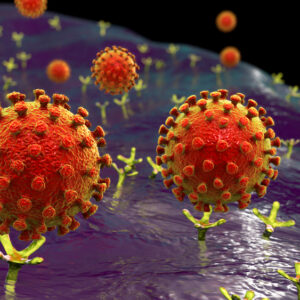Filovirus Receptors
The Native Antigen Company manufacturers highly purified virus-host cell receptors using state-of-the-art expression and purification techniques. On request we can also undertake custom preparation of recombinant and native proteins for a broad range of disease states.
Filovirus Receptors Background
The family Filoviridae contains several related viruses (filoviruses or filovirids) that form filamentous infectious viral particles (virions), and encode single-stranded negative-sense RNA genomes. Family members include Ebola virus and Marburg virus (both biosafety level 4 agents), which cause severe disease in humans and non-human primates in the form of viral haemorrhagic fevers. Filoviruses are an ancient family and are likely to have an evolutionary history of tens of millions of years. Endogenous virus sequences that appear to be derived from filovirus-like viruses have been identified in the genomes of bats, rodents, shrews, tenrecs, tarsiers and marsupials.
The filovirus envelope glycoprotein (GP) is responsible for both receptor binding and fusion of the virus envelope with the host cell membrane. Since GP is the only viral surface GP, it is believed to play an important role in controlling the tropism and pathogenesis of filovirus infection. The mucin-like region (MLR) on GP interacts with multiple molecules for entry into host cells, although none of the interactions identified to date fully explains the breadth of filovirus tissue tropism and host range.
Filoviruses show broad tissue tropism and hepatocytes, endothelial cells, dendritic cells, monocytes, and macrophages are thought to be their preferred target cells. Members of the Tyro3 receptor tyrosine kinase family (Axl, Dtk, and Mer) have been shown to be involved in cell entry of filoviruses. Other candidate molecules believed to play a role in filovirus entry include human folate receptor-α, endo/lysosomal cholesterol transporter protein Niemann–Pick C1 (NPC1) and C-type lectins.
However, although it is known that Filoviruses utilize multiple molecules for their entry into cells, it is still unclear which of these molecules serve as functional receptors mediating both viral attachment and membrane fusion or play independent roles, as either attachment receptors or fusion receptors.
Filovirus Receptors
We offer a range of filovirus receptors comprising highly purified recombinant proteins known to bind to a broad spectrum of viruses.
Questions?
Check out our FAQ section for answers to the most frequently asked questions about our website and company.



